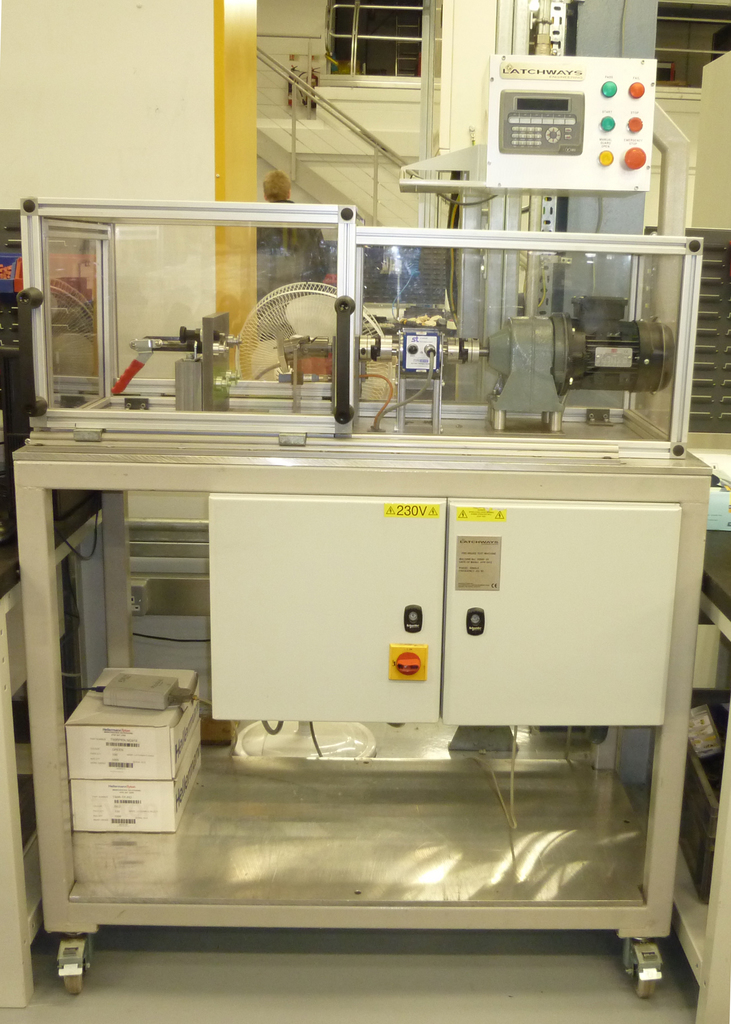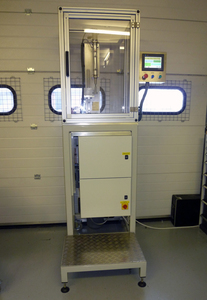

|
Edward Lowton
Editor |


|
| Home> | Health, Safety & Welfare | >Slip, trip and fall prevention | >Testing time for fall arrestors |
Testing time for fall arrestors
30 October 2015
Latchways has developed two different test rigs as part of its rigorous programme to confirm the quality of its fall arrest products. Both rigs use TorqSense transducers from Sensor Technology as the main means of measuring the critical test parameters.

Latchways’ ManSafe solutions are used in sectors as diverse as aerospace, power distribution and utilities, telecommunications, roofing, construction and building maintenance. The systems can work horizontally, vertically, along inclines and overhead, and can be installed permanently or temporarily.
Latchways attributes their versatility to its deep understanding of load control and its Transfastener and constant force technologies.
The first, and larger, test rig is called the Personal Rescue Device Brake Test Machine. This is used as an integral part of the manufacturing process and is designed to test the braking operation of the chassis, main gear and drum subassembly of the arrestor, prior to application of the rope.
The machine simulates optimum descent conditions by revolving the drum at 120rpm, which equates to a typical descent speed of 1m/s. The effectiveness of the brake operation is assessed using an in-line TorqSense torque transducer, which measures the resistance to rotation – due to braking – of the assembly. Average torque is measured over a 10-sec test period and ‘pass’ stickers are automatically printed only if the torque falls within preset minimum and maximum torque limits.
The other test rig is referred to as the torque testing machine for the tolerance ring assembly of self-retracting lifelines (SRLs). The purpose of this machine is to test the torque when the pawl housing is rotated, relative to the drum and tolerance ring subassembly, in order to confirm the integrity of the build.
The machine holds the pawl housing stationary while a high torque motor (500Nm) drives the drum through 122° of rotation at an angular speed of one revolution per minute. A TorqSense transducer is used to measure the torque during this operation. An adjustable torque pass/fail criteria is incorporated into its programmable logic controller software, so that it is adaptable for different models and sizes of SRL. It is also possible to change test angle and speed as well as the upper and lower data measurement limits. The machine can also give a graphical representation of the torque results, using TorqSense’s TorqView software.
TorqSense is an easy-to-use, non-contact sensor. It is mounted close to the test piece and takes its reading via a radio frequency signal, which it bounces off the shaft. The returning signal has its frequency changed in proportion to the torque, due to a pair of tiny piezoelectric combs glued onto the shaft, which distort, due to the rotation of the shaft.
This ease and speed of use is particularly appreciated in environments such as Latchways, where test is an integral part of manufacture rather than a separate function.
- Ten top torque tips
- Talking the torque
- Torque transducers test powertrain technology
- Heli-hook helps raise angel
- British engineering used in test rig
- New wireless torque technology
- Pumps are in for a testing time
- New levels of control
- Simple solution aids SOLAS compliance
- Sensors aid tidal turbine development


















